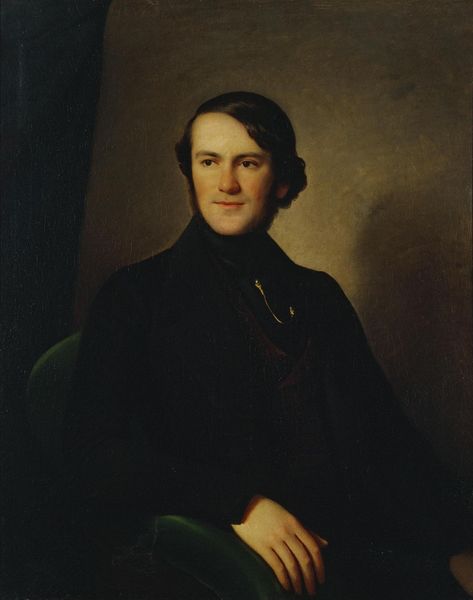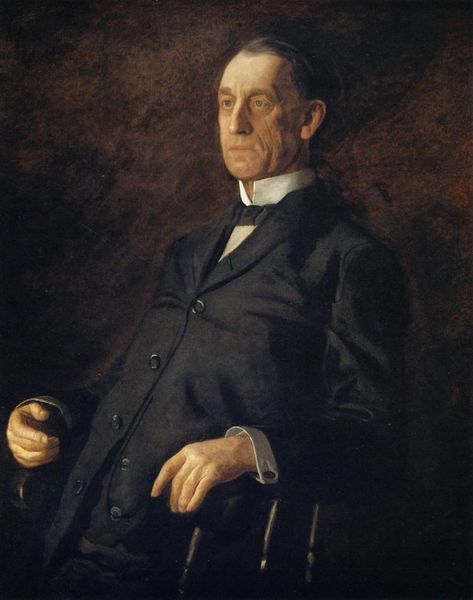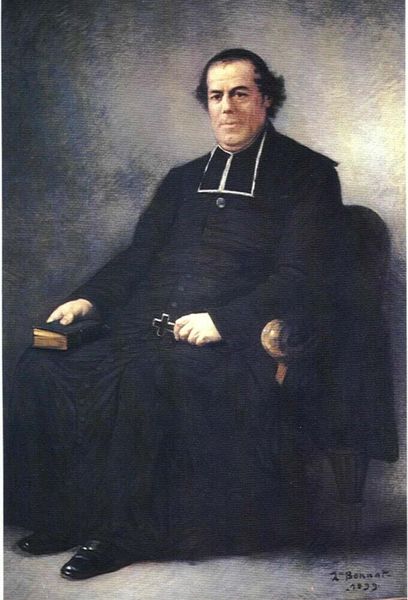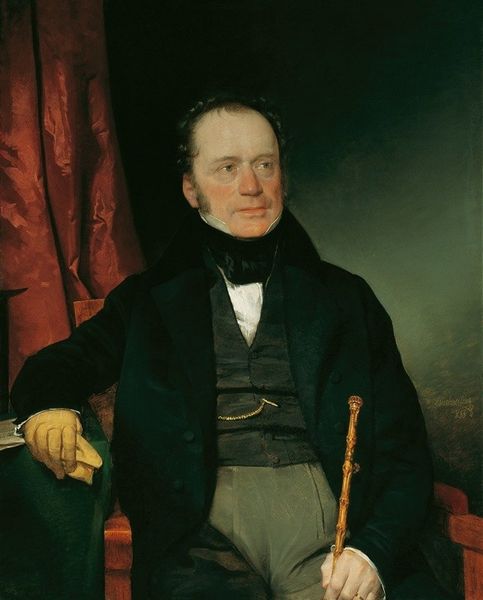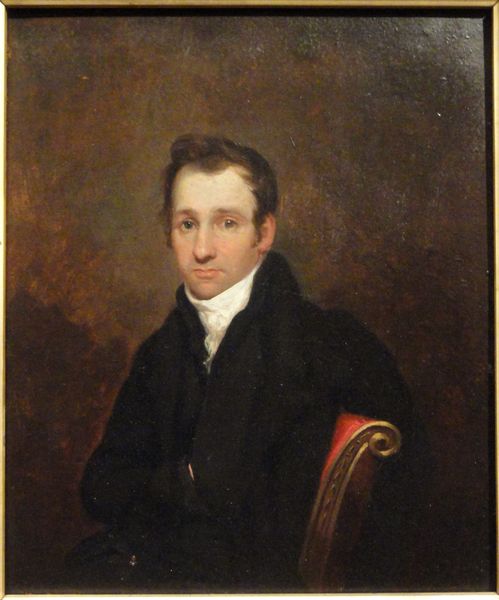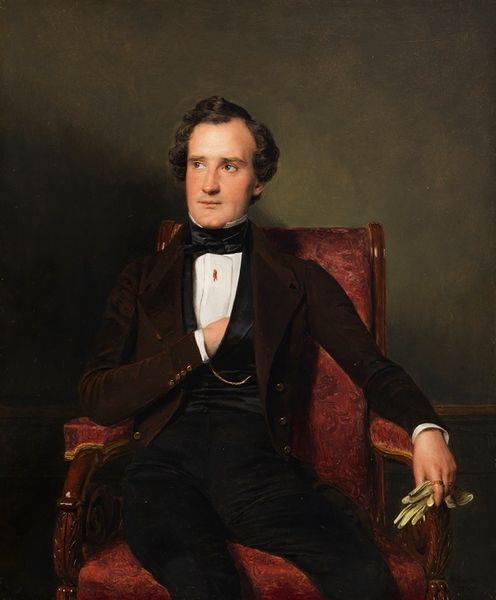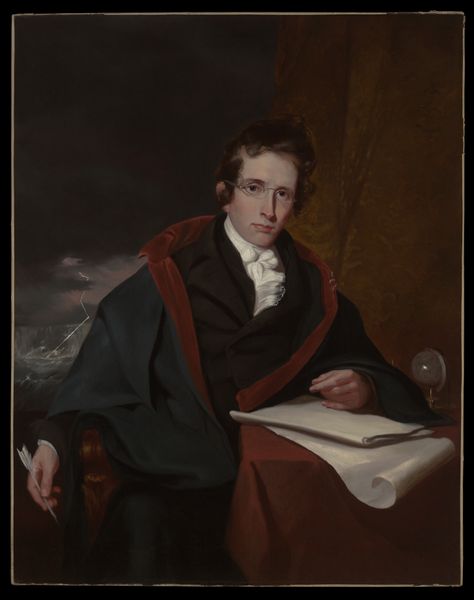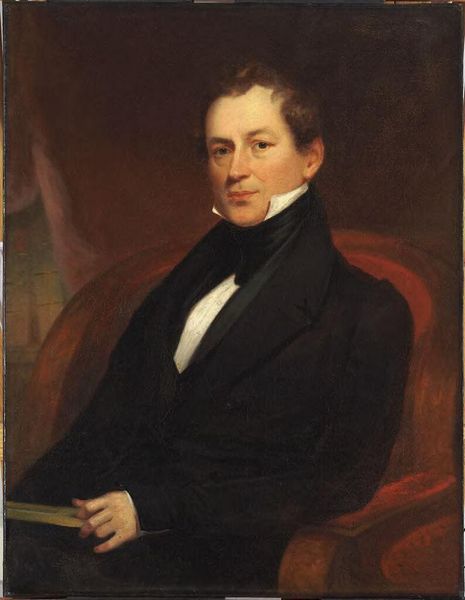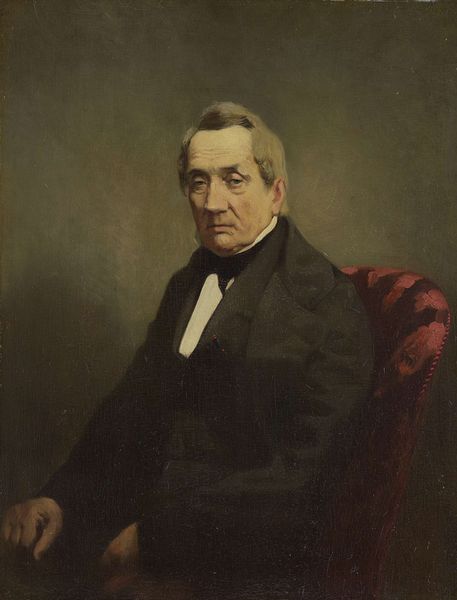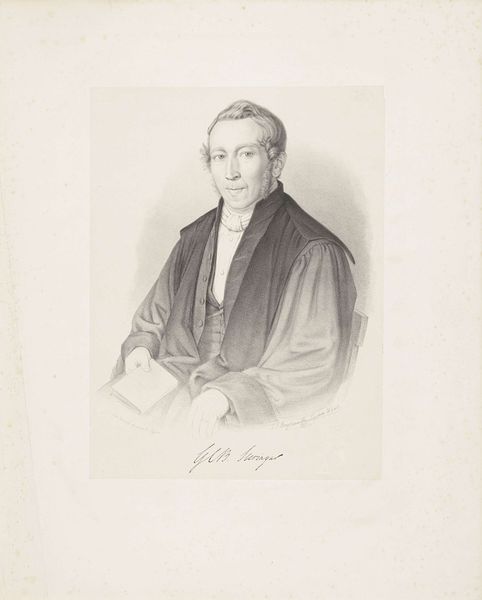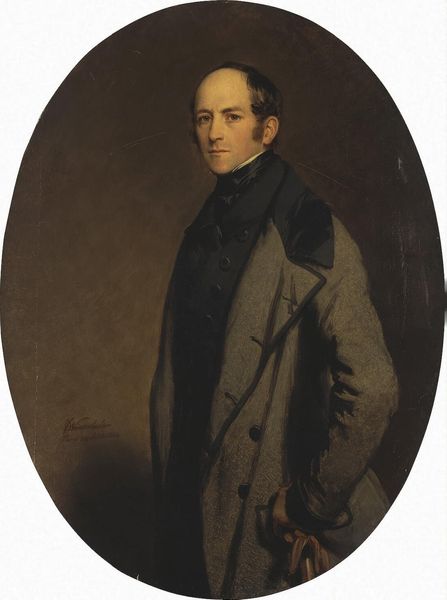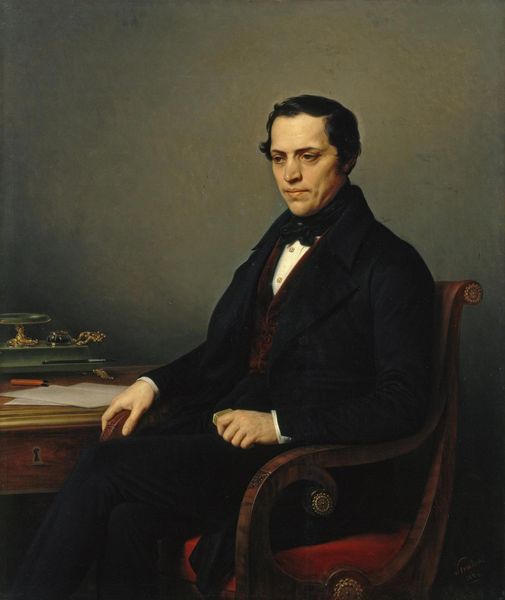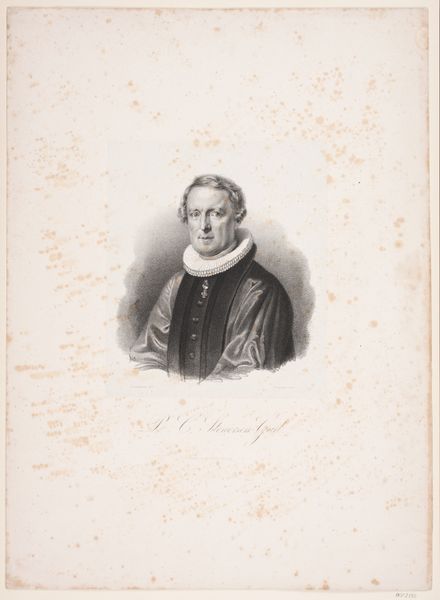
painting, oil-paint
#
portrait
#
neoclacissism
#
painting
#
oil-paint
#
history-painting
#
academic-art
Copyright: Public domain
Curator: Here we have Francesco Hayez's 1856 oil on canvas, "Portrait of Antonio Rosmini," currently residing in Milan's Galleria d'Arte Moderna. My first impression? It feels almost... austere. Editor: Indeed. The darkness of his clerical garments against that neutral background lends him a solemnity, almost like a figure from a bygone era despite its relatively recent creation. His downcast gaze contributes to that impression, doesn't it? Curator: Precisely. And knowing Rosmini was a philosopher and a priest during a tumultuous period of Italian unification, this restrained image seems intentional. Hayez was a prominent figure in the Milanese art scene and understood the weight of representation, particularly for figures involved in the Risorgimento. Editor: I agree, though there’s also something intensely personal here. Notice how he holds his spectacles; they could be viewed as a symbol for learning and Rosmini's intellectual life, a potent visual element that humanizes him. It draws the viewer in. Curator: I find the almost neoclassical approach fascinating. The composition is simple, the colour palette restrained. One could easily imagine this being sculpted in marble; an attempt to depict a serious man for posterity. Rosmini was indeed a man of many philosophical contradictions whose thoughts touched on varied subjects. Hayez seems determined to depict him without obvious symbolism but somehow imbue him with authority and intelligence. Editor: I think the glasses and their almost casual placement on his fingertips subtly communicate Rosmini’s world; someone engaged in continuous thought. Hayez offers that little visual thread so we understand that even as Rosmini is captured on the canvas, he’s perpetually somewhere else. A private and internalized state of thinking... Curator: Perhaps, I may perceive Hayez's treatment a little more critically; was this really intended to represent who Rosmini was, or what Hayez (and, by extension, the political establishment) wanted to present? Editor: It’s an interesting point, indeed; although it's difficult not to think about art and public role in that period. Perhaps his intent falls somewhere between a public statement and Hayez's personal interpretation of Rosmini. The symbols present – if we see them as such - may reveal the complex relation between Rosmini's philosophy and its acceptance during his lifetime. Curator: The painting certainly gives one a lot to think about. There is plenty to engage with, for certain!
Comments
No comments
Be the first to comment and join the conversation on the ultimate creative platform.
